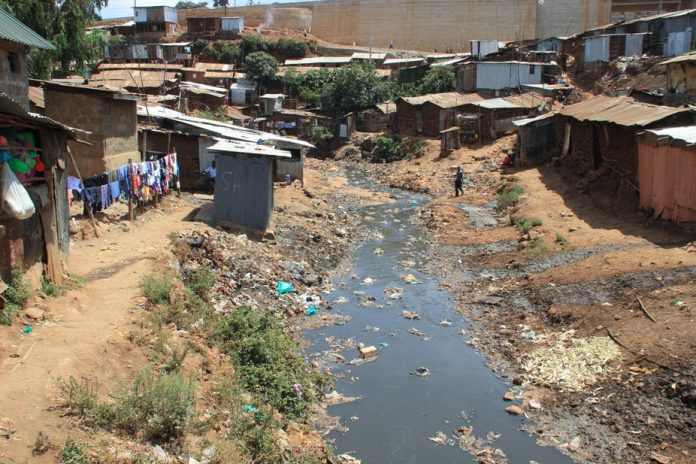By Damaris Mbui
A lot happens along the course of the Nairobi River as it makes its way from the north west to the south east of the city. It’s mainly used by residents of low-income settlements as a source of water for cleaning homes, bathing and for watering crops. But it’s also used to discard household and human waste as many homes don’t have toilets, and industrial waste is frequently dumped in the river.
I’ve done studies on the quality of water in Nairobi River focusing on the presence of metals in the water. I found that the levels of lead, copper, chromium, zinc and manganese were far beyond those allowed by the World Health Organisation (WHO) and Kenya’s National Environment Management Authority.
I also found harmful levels of bacteria. The levels of Escherichia coli (E. coli) were incredibly high – up to one million units in 100ml of water. There should be no E.coli in drinking water. It’s presence indicates faecal contamination, which could lead to periodic outbreaks of water-borne diseases like typhoid, cholera and dysentery.
There are major concerns about the state of the river, which runs through the heart of the country’s capital – Nairobi. And Kenya’s national environmental management agency is cracking down on industries accused of discharging pollutants into the river.
But there are huge holes in the governance of the river and the city’s waste, which have enabled the river’s poor condition. More needs to be done to address this, especially as the city continues to grow.
Waste management
There needs to be better management of industrial waste. Policies that govern waste water purification from industries aren’t strictly followed, often due to a lack of official monitoring. The heavy metals I found indicate industrial waste that comes from paint, leather and electroplating industries, among others.
Another problem is a lack of proper solid waste management. Kenya currently doesn’t have landfills, most solid waste is disposed of in uncontrolled, open dumpsites. An engineered landfill is deliberately constructed to handle waste. It’s lined at the bottom to prevent groundwater pollution and has a system to collect and treat leachates and capture biogas.
Human waste is also not treated properly. There are very few sanitation facilities in slums and other informal settlements, so residents will use the river to dispose of their waste. For those with sanitation facilities, there are just two sewage treatment plants that service Nairobi – Ruai and Kariobangi. But Ruai can’t process very much waste water and most of the equipment at the Kariobangi treatment plant has broken down



